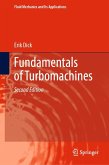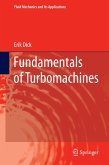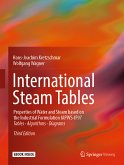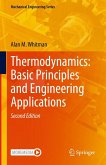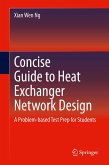This textbook provides an alternative, inductive treatment of traditional Engineering Thermodynamics, e.g. energy and its transformations in engineering systems, and emphasizes the notion of eXergy. The book begins with energy methods developed in mechanics and transitions to thermodynamics by introducing both 1st and 2nd Laws of Thermodynamics immediately, incorporating more-advanced concepts using practical applications. This methodology continues throughout the text, wherein consideration of a specific example leads to general conclusions. At the same time, the author introduces eXergy, also called "Availability," a measure of the potential of a substance to produce useful mechanical work in being brought from its current state to the conditions of the local environment.
The book facilitates students' understanding with workshop problem statements and guided spreadsheets. It is appropriate for a sophomore- or junior-level first course in thermodynamics and is restricted to "simple compressible substances" with no formal chemical reaction development. Mechanical engineering applications are the primary target, where several follow-up courses would follow (fluid mechanics, heat transfer, and a 2nd thermodynamics course). Civil or electrical engineering students could benefit from just this course, and chemical engineering programs could develop chemically reacting and non-ideal applications in follow-up courses.
- Adopts an inductive approach in which practical examples are introduced and studied from a thermodynamic perspective
- Explains engineering thermodynamics iteratively,, from mechanics examples through complex thermal systems
- Introduces core concepts followed by "deeper dives" to allow for a variety of levels of study in a single resource.
Dieser Download kann aus rechtlichen Gründen nur mit Rechnungsadresse in A, B, BG, CY, CZ, D, DK, EW, E, FIN, F, GR, HR, H, IRL, I, LT, L, LR, M, NL, PL, P, R, S, SLO, SK ausgeliefert werden.
Es gelten unsere Allgemeinen Geschäftsbedingungen: www.buecher.de/agb
Impressum
www.buecher.de ist ein Shop der
buecher.de GmbH & Co. KG
Bürgermeister-Wegele-Str. 12,
86167 Augsburg
Amtsgericht Augsburg HRA 13309
Persönlich haftender Gesellschafter: buecher.de Verwaltungs GmbH
Amtsgericht Augsburg HRB 16890
Vertretungsberechtigte:
Günter Hilger, Geschäftsführer
Christian Sailer, Geschäftsführer
Sitz der Gesellschaft:Augsburg
Ust-IdNr. DE 204210010



